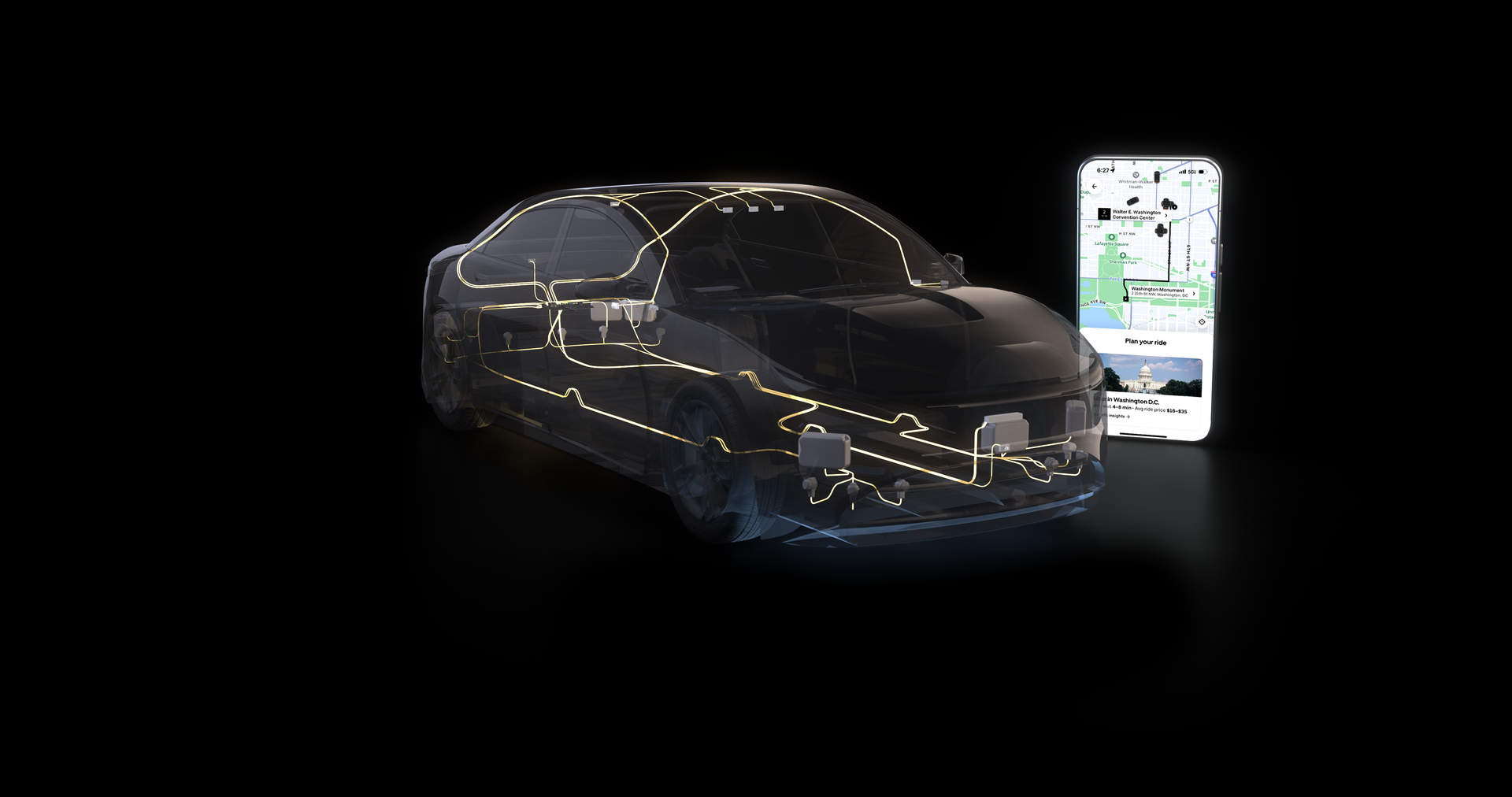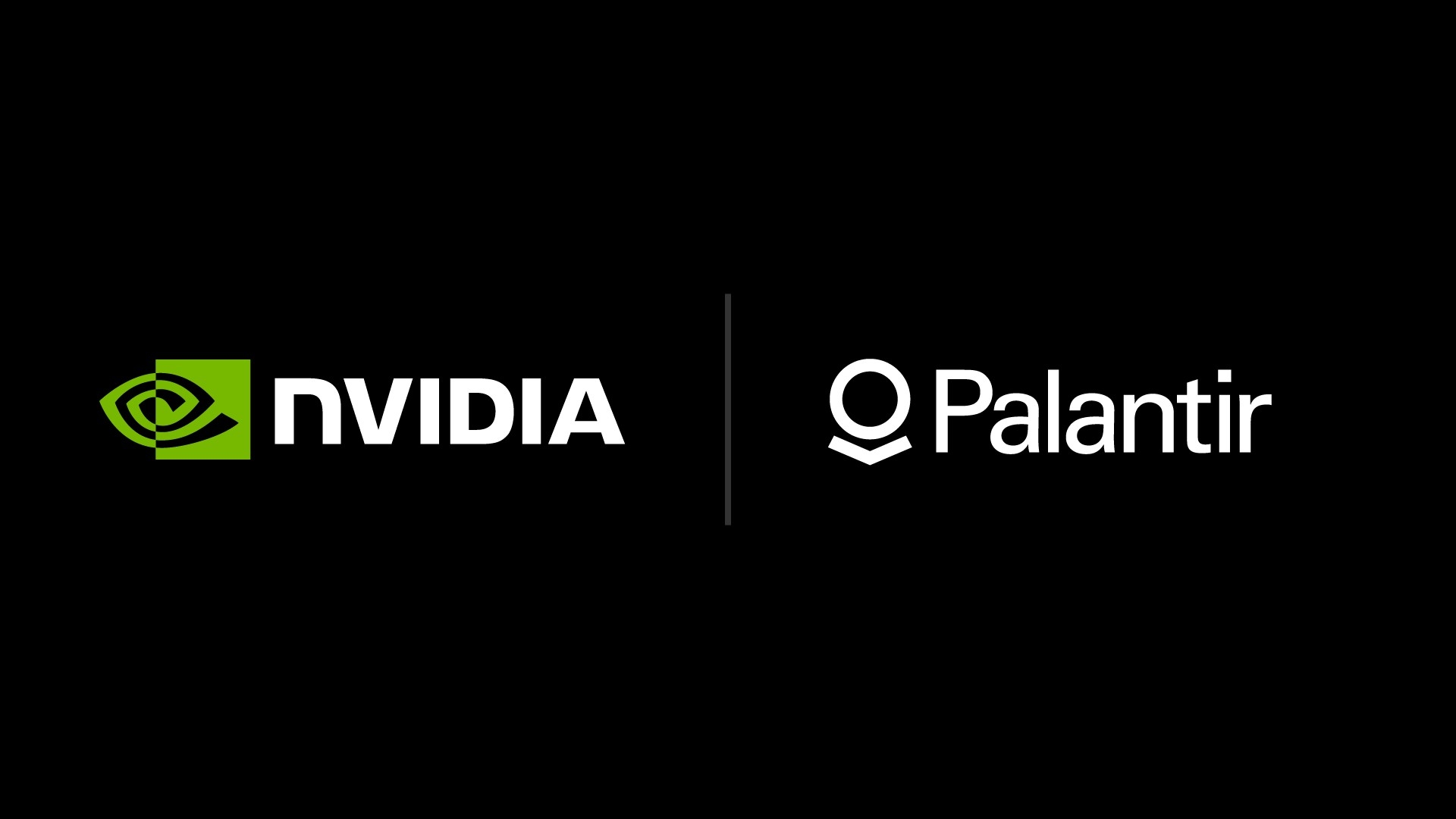How ubiquitous is anime? It’s now being used to treat lazy eye in children.
Anime giant Crunchyroll has partnered with Luminopia, a digital health company that devises new treatments for significant neuro-visual disorders, for a new VR…

How ubiquitous is anime? It’s now being used to treat lazy eye in children.
Anime giant Crunchyroll has partnered with Luminopia, a digital health company that devises new treatments for significant neuro-visual disorders, for a new VR…

On October 29, 2025, the interstellar object 3I/ATLAS will get to the closest distance of 203…

Stellantis, Lucid and Mercedes-Benz Join Level 4 Ecosystem Leaders Leveraging the NVIDIA DRIVE AV Platform and DRIVE AGX Hyperion 10 Architecture to Accelerate Autonomous Driving
News Summary:
GTC Washington, D.C.—NVIDIA today announced it is partnering with Uber to scale the world’s largest level 4-ready mobility network, using the company’s next-generation robotaxi and autonomous delivery fleets, the new NVIDIA DRIVE AGX Hyperion™ 10 autonomous vehicle (AV) development platform and NVIDIA DRIVE™ AV software purpose-built for L4 autonomy.
By enabling faster growth across the level 4 ecosystem, NVIDIA can support Uber in scaling its global autonomous fleet to 100,000 vehicles over time, starting in 2027. These vehicles will be developed in collaboration with NVIDIA and other Uber ecosystem partners, using NVIDIA DRIVE. NVIDIA and Uber are also working together to develop a data factory accelerated by the NVIDIA Cosmos™ world foundation model development platform to curate and process data needed for autonomous vehicle development.
NVIDIA DRIVE AGX Hyperion 10 is a reference production computer and sensor set architecture that makes any vehicle L4-ready. It enables automakers to build cars, trucks and vans equipped with validated hardware and sensors that can host any compatible autonomous-driving software, providing a unified foundation for safe, scalable and AI-defined mobility.
Uber is bringing together human drivers and autonomous vehicles into a single operating network — a unified ride-hailing service including both human and robot drivers. This network, powered by NVIDIA DRIVE AGX Hyperion-ready vehicles and the surrounding AI ecosystem, enables Uber to seamlessly bridge today’s human-driven mobility with the autonomous fleets of tomorrow.
“Robotaxis mark the beginning of a global transformation in mobility — making transportation safer, cleaner and more efficient,” said Jensen Huang, founder and CEO of NVIDIA. “Together with Uber, we’re creating a framework for the entire industry to deploy autonomous fleets at scale, powered by NVIDIA AI infrastructure. What was once science fiction is fast becoming an everyday reality.”
“NVIDIA is the backbone of the AI era, and is now fully harnessing that innovation to unleash L4 autonomy at enormous scale, while making it easier for NVIDIA-empowered AVs to be deployed on Uber,” said Dara Khosrowshahi, CEO of Uber. “Autonomous mobility will transform our cities for the better, and we’re thrilled to partner with NVIDIA to help make that vision a reality.”
NVIDIA DRIVE Level 4 Ecosystem Grows
Leading global automakers, robotaxi companies and tier 1 suppliers are already working with NVIDIA and Uber to launch level 4 fleets with NVIDIA AI behind the wheel.
Stellantis is developing AV-Ready Platforms, specifically optimized to support level 4 capabilities and meet robotaxi requirements. These platforms will integrate NVIDIA’s full-stack AI technology, further expanding connectivity with Uber’s global mobility ecosystem. Stellantis is also collaborating with Foxconn on hardware and systems integration.
Lucid is advancing level 4 autonomous capabilities for its next-generation passenger vehicles, also using full-stack NVIDIA AV software on the DRIVE Hyperion platform for its upcoming U.S. models.
Mercedes-Benz is testing future collaboration with industry-leading partners powered by its proprietary operation system MB.OS and DRIVE AGX Hyperion. Building on its legacy of innovation, the new S-Class offers an exceptional chauffeured level 4 experience combining luxury, safety and cutting-edge autonomy.
NVIDIA and Uber will continue to support and accelerate shared partners across the worldwide level 4 ecosystem developing their software stacks on the NVIDIA DRIVE level 4 platform, including Avride, May Mobility, Momenta, Nuro, Pony.ai, Wayve and WeRide.
In trucking, Aurora, Volvo Autonomous Solutions and Waabi are developing level 4 autonomous trucks powered by the NVIDIA DRIVE platform. Their next-generation systems, built on NVIDIA DRIVE AGX Thor, will accelerate Volvo’s upcoming L4 fleet, extending the reach of end-to-end NVIDIA AI infrastructure from passenger mobility to long-haul freight.
NVIDIA DRIVE AGX Hyperion 10: The Common Platform for L4-Ready Vehicles
The NVIDIA DRIVE AGX Hyperion 10 production platform features the NVIDIA DRIVE AGX Thor system-on-a-chip; the safety-certified NVIDIA DriveOS™ operating system; a fully qualified multimodal sensor suite including 14 high-definition cameras; nine radars, one lidar and 12 ultrasonics; and a qualified board design.
DRIVE AGX Hyperion 10 is modular and customizable, allowing manufacturers and AV developers to tailor it to their unique requirements. By offering a prequalified sensor suite architecture, the platform also accelerates development, lowers costs and gives customers a running start with access to NVIDIA’s rigorous development expertise and investments in automotive engineering and safety.
At the core of DRIVE AGX Hyperion 10 are two performance-packed DRIVE AGX Thor in-vehicle platforms based on NVIDIA Blackwell architecture. Each delivering more than 2,000 FP4 teraflops (1,000 TOPS of INT8) of real-time compute, DRIVE AGX Thor fuses diverse, 360-degree sensor inputs and is optimized for transformer, vision language action (VLA) models and generative AI workloads — enabling safe, level 4 autonomous driving backed by industry-leading safety certifications and cybersecurity standards.
In addition, DRIVE AGX’s scalability and compatibility with existing AV software lets companies seamlessly integrate and deploy future upgrades from the platform across robotaxi and autonomous mobility fleets via over-the-air updates.
Generative AI and Foundation Models Transform Autonomy
NVIDIA’s autonomous driving approach taps into foundation AI models, large language models and generative AI, trained on trillions of real and synthetic driving miles. These advanced models allow self-driving systems to solve highly complex urban driving situations with humanlike reasoning and adaptability.
New reasoning VLA models combine visual understanding, natural language reasoning and action generation to enable human-level understanding in AVs. By running reasoning VLA models in the vehicle, the AV can interpret nuanced and unpredictable real-world conditions — such as sudden changes in traffic flow, unstructured intersections and unpredictable human behavior — in real time. AV toolchain leader Foretellix is collaborating with NVIDIA to integrate its Foretify Physical AI toolchain with NVIDIA DRIVE for testing and validating these models.
To enable the industry to develop and evaluate these large models for autonomous driving, NVIDIA is also releasing the world’s largest multimodal AV dataset. Comprising 1,700 hours of real-world camera, radar and lidar data across 25 countries, the dataset is designed to bolster development, post-training and validation of foundation models for autonomous driving.
NVIDIA Halos Sets New Standards in Vehicle Safety and Certification
The NVIDIA Halos system delivers state-of-the-art safety guardrails from cloud to car, establishing a holistic framework to enable safe, scalable autonomous mobility.
The NVIDIA Halos AI Systems Inspection Lab, dedicated to AI safety and cybersecurity across automotive and robotics, performs independent evaluations and oversees the new Halos Certified Program, helping ensure products and systems meet rigorous criteria for trusted physical AI deployments.
Companies such as AUMOVIO, Bosch, Nuro and Wayve are among the inaugural members of the NVIDIA Halos AI System Inspection Lab — the industry’s first to be accredited by the ANSI Accreditation Board. The lab aims to accelerate the safe, large-scale deployment of Level 4 automated driving and other AI-powered systems.
Learn more about how NVIDIA and partners are advancing AI innovation in the U.S. by watching the NVIDIA GTC Washington, D.C., keynote by Huang.

Thunder out to stay unbeaten vs. visiting Kings Tuesday night.
The Oklahoma City Thunder remain undefeated through their first three games of the season and will look to keep that run alive Tuesday when hosting the Sacramento Kings, who have gone…

When Bugonia entered production, Robbie approached us again, this time with a vision to honour another animal film symbol: the bee. As soon as the shoot wrapped, at the end of summer 2024, Robbie sent us one of the prop insects from the Bugonia…

Although she lived in Glasgow for 40 years, Zoë Wicomb, who has died aged 76, remained as much a South African as a Scottish writer. Her four novels and two short story collections convey in vibrant prose the dramas and dilemmas, minor as well…

Blasts have been heard in Gaza after Israel’s prime minister Benjamin Netanyahu ordered his military to carry out “powerful” strikes.
Witnesses report the sound of explosions and tanks firing in Gaza City and other parts of Gaza.
It…

News Summary
GTC Washington, D.C.—NVIDIA today announced a collaboration with Palantir Technologies Inc. to build a first-of-its-kind integrated technology stack for operational AI — including analytics capabilities, reference workflows, automation features and customizable, specialized AI agents — to accelerate and optimize complex enterprise and government systems.
Palantir Ontology, at the core of the Palantir AI Platform (AIP), will integrate NVIDIA GPU-accelerated data processing and route optimization libraries, open models and accelerated computing. This combination of Ontology and NVIDIA AI will support customers by providing the advanced, context-aware reasoning necessary for operational AI.
Enterprises using the customizable technology stack will be able to tap into their data to power domain-specific automations and AI agents for the sophisticated operating environments of retailers, healthcare providers, financial services and the public sector.
“Palantir and NVIDIA share a vision: to put AI into action, turning enterprise data into decision intelligence,” said Jensen Huang, founder and CEO of NVIDIA. “By combining Palantir’s powerful AI-driven platform with NVIDIA CUDA-X accelerated computing and Nemotron open AI models, we’re creating a next-generation engine to fuel AI-specialized applications and agents that run the world’s most complex industrial and operational pipelines.”
“Palantir is focused on deploying AI that delivers immediate, asymmetric value to our customers,” said Alex Karp, cofounder and CEO of Palantir Technologies. “We are proud to partner with NVIDIA to fuse our AI-driven decision intelligence systems with the world’s most advanced AI infrastructure.”
Lowe’s Pioneers AI-Driven Logistics With Palantir and NVIDIA
Lowe’s, among the first to tap this integrated technology stack from Palantir and NVIDIA, is creating a digital replica of its global supply chain network to enable dynamic and continuous AI optimization. This technology can support supply chain agility while boosting cost savings and customer satisfaction.
“Modern supply chains are incredibly complex, dynamic systems, and AI will be critical to helping Lowe’s adapt and optimize quickly amid constantly changing conditions,” said Seemantini Godbole, executive vice president and chief digital and information officer at Lowe’s. “Even small shifts in demand can create ripple effects across the global network. By combining Palantir technologies with NVIDIA AI, Lowe’s is reimagining retail logistics, enabling us to serve customers better every day.”
Advancing Operational Intelligence
Palantir AIP workloads run in the most complex compliance domains and require the highest standards of privacy and data security. The Ontology at the heart of AIP creates a digital replica of an organization by organizing complex data and logic into interconnected virtual objects, links and actions that represent real-world concepts and their relationships.
Together, this provides enterprises with an intelligent, AI-enabled operating system that drives efficiency through business process automation.
To advance enterprise intelligence for the era of AI, NVIDIA data processing, AI software, open models and accelerated computing are now natively integrated with and available through Ontology and AIP. Customers can use NVIDIA CUDA-X™ data science libraries for data processing, paired with NVIDIA accelerated computing, via Ontology to drive real-time, AI-driven decision-making for complex, business-critical workflows.
The NVIDIA AI Enterprise platform, including NVIDIA cuOpt™ decision optimization software, will enable enterprises to use AI for dynamic supply-chain management.
NVIDIA Nemotron™ reasoning and NVIDIA NeMo Retriever™ open models will enable enterprises to rapidly build AI agents informed by Ontology.
NVIDIA and Palantir are also working to bring the NVIDIA Blackwell architecture to Palantir AIP. This will accelerate the end-to-end AI pipeline, from data processing and analytics to model development and fine-tuning to production AI, using long-thinking, reasoning agents. Enterprises will be able to run AIP in NVIDIA AI factories for optimized acceleration.
Palantir AIP will also be supported in the new NVIDIA AI Factory for Government reference design, announced separately today.
At NVIDIA GTC Washington, D.C., attendees can register to join Palantir and NVIDIA for a hands-on workshop on operationalizing AI, taking place Wednesday, Oct. 29, from 3:15–5:00 p.m. ET.
Learn more about how NVIDIA and partners are advancing AI innovation in the U.S. by watching the NVIDIA GTC Washington, D.C., keynote by Huang.

Hurricane Melissa is close to hitting Jamaica as a catastrophic category 5 storm, the strongest to lash the island since record-keeping began in 1851.
The slow-moving giant will make landfall on Tuesday afternoon local time and linger over the…

A recent retrospective cohort study of 33,060 first-time pregnancies from 2017 to 2022 highlights critical links between environmental air pollution, gestational diabetes mellitus (GDM), and birth weight outcomes. While air pollution exposure…